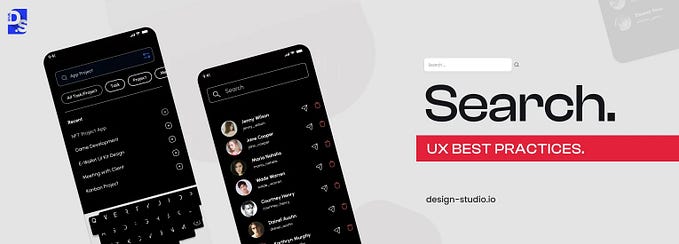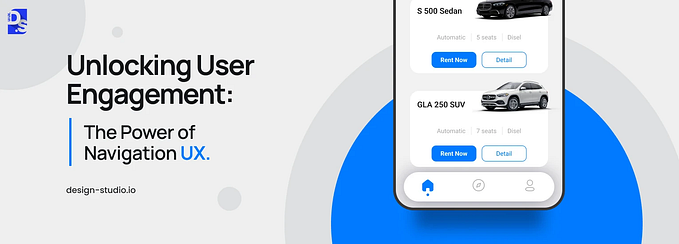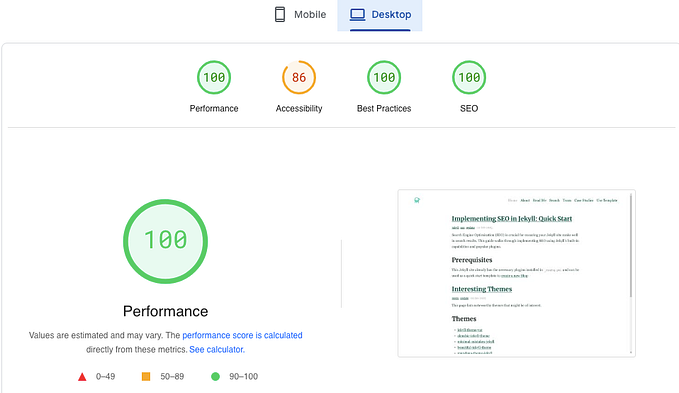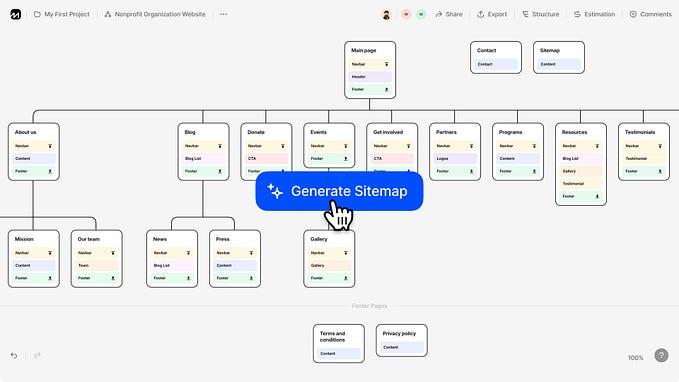The Future of Web App Design

In the last ten years, we saw web apps like Asana, Dropbox, Tableau, Trello, and Slack win the hearts of millions with their user-centric designs. What do the next ten years hold for the future of web app design? Whatever it is, it’s going to be exciting.
Web app adoption rates are set to hit record figures in 2025. AI tools like GitHub Spark are now letting users build web apps in plain English. You read that right — with just a few prompts, you can build a web app in seconds.
Many other exciting things are happening in the world of web apps. So, we are hopeful that the future of web app design is going to be extremely exciting.
Here are the key trends that will shape the next decade of web app design.
The Future of Web App Design is Responsive
In 2012, only around 10% of global web traffic came from mobile devices. In 2024, that figure is over 60%. In 2034, we expect that figure to be much higher.
In other words, the future of web app design is responsive.
Responsive web apps are apps that can be accessed/used via desktops, mobile, or any other device. They have fluid layouts, flexible grids, and fully responsive designs that deliver the same quality of user experiences on all devices. Magic Leap, Fable Homes, and Hello Bello are some popular examples of web apps with responsive designs.
To prepare your web app’s design for the future, you must adopt a responsive design.
- Only use fluid layouts that are inherently adaptable to different screen sizes for your web app’s UI.
- Design for small screens first, then enhance for larger devices.
- Identify core functionalities that provide value to mobile users; prioritize their designs.
- Optimize key services and navigation for quick, touchscreen-friendly access.
- Maintain a clean interface with ample white space and legible text.
- Design input forms with fewer fields and larger touch targets.
- Use fluid grids and CSS media queries to adjust layouts for larger screens.
- Conduct regular testing on the latest mobile devices to validate the design approach.
Also, constantly review your web app’s responsiveness with tools like Google’s Mobile-Friendly Test or BrowserStack.
The Future of Web App Design is Secure
74% of web apps that were commonly used by businesses in 2023 were vulnerable to cyberattacks. In 2024, at least 30% of web apps used by businesses had major security flaws.
In 2025, web app designers are expected to take concrete steps to halt these dangerous trends. Here’s how the future of web app design is set to be more security-oriented:
Robust Authentication
Strong authentication mechanisms in all web apps (and especially business web apps) is gradually becoming the norm from now on. We are talking
- Checkout pages with multi-factor authentication (MFA)
- Fingerprint or face-scanning interfaces designed within web apps
- Making it easier for web app users to create strong, 32-letter passwords with AI assistance
- Implementing automatic log-outs for inactive users
Educating Users
Web app designers have started using tooltips, visual guides, and other design tricks to help users make more secure choices. In business-grade web apps, designers are implementing granular access controls based on permissions and user roles.
Secure File Uploads
For web apps that allow file uploads, designers are creating interfaces that auto-scan all uploaded files for malware.
Better Password Input Design
Web app designers are increasingly implementing features that allow users to toggle visibility for password inputs, making it easier to enter complex passwords correctly. This approach encourages users to create stronger passwords without the fear of making mistakes during entry.
Web apps are gearing up to accommodate password managers by allowing paste functionality in password fields. Disabling paste options has been a frustrating barrier for users who rely on complex passwords generated by these tools.
By enabling this feature, web apps would be able to enhance security while providing a smoother user experience, allowing users to easily fill in their credentials without having to remember them.
As more and more companies use web apps for business-critical tasks, designers will be asked to play more prominent roles in boosting their security.
Making Interactive Elements Obvious and Discoverable
As web app design evolves, a key trend will be making interactive elements within these apps clear and easily identifiable. This shift addresses the shortcomings of flat design — an age-old design trend that dominated web apps throughout the 2010s.
Flat design obscured usability and made it hard to decipher which elements inside web apps were interactable. To tackle this, web designers are taking these steps:
- Visual Affordances: Web app designers are inclined to incorporate visual cues that suggest interactivity. Buttons look pushable, featuring depth and texture to indicate they can be clicked.
- Real-World Inspiration: Drawing from familiar physical controls, web app designers can create buttons that behave like their real-life counterparts. Features like raised edges or indicators enhance user understanding of functionality.
- Clear Differentiation: Non-interactive elements must and will not resemble buttons in web app UIs anymore. This clarity can prevent user confusion and ensure that all interactive components are easily identifiable.
- Consistent Feedback: Interactive elements will provide immediate feedback when clicked, such as color changes or subtle animations.
- Size: Buttons are going to be designed large enough for easy tapping, especially on mobile devices.
By making all interactive elements in web app UIs obvious and discoverable, designers can now enhance their usability, reduce cognitive load, and create more engaging experiences.
AI Will Play Many Roles in The Future of Web App Design
Remember reading about web apps that can be designed + developed with nothing but text prompts in the intro? Well, that is not the only way AI is set to impact the future of web apps:
Personalization
SAI will enable web apps to deliver highly personalized experiences by analyzing user data and behavior. Major web apps like Trello, Slack, and Asana already use AI algorithms to recommend + curate content based on user’s browsing history.
In the future, this capability is going to expand, allowing web app designers to dynamically adjust content and features in real time according to individual user preferences.
Enhanced User Research
AI tools like Hotjar already automate tasks like feedback collection/analysis. As AI research technology evolves, these tools can offer even deeper insights into web app users’ behavior.
Predictive Analytics
Tools like Google Analytics already provide deep insights into user behavior, helping web app designers create interfaces that align perfectly with user expectations.
As AI technology advances, web apps are expected to proactively suggest actions or content based on predicted user behavior.
Automated Design Generation
AI apps like Uizard already allow web app designers to quickly generate design elements from sketches/text prompts. In the future, AI is projected to automate even more aspects of the design process.
We can expect faster prototyping and development cycles. This in turn will lead to more innovative web app designs as designers get to focus more on refining unique elements rather than repetitive tasks.
Infinite Scroll for Feed-Style Content
Soon, we can find more web apps using infinite scroll to enhance user engagement with feed-style content, such as social media posts or news articles. This design approach allows users to scroll continuously, loading more items as they reach the bottom of the page.
Web apps like Instagram and Twitter have successfully implemented this feature, making it easier for users to consume content without interruption.
However, it is essential that web app designers provide clear indicators when new content is loading and ensure users can easily navigate back to where they left off.
Streamlined Cookie Consent Management
As privacy regulations continue to evolve, web apps need to simplify how they handle cookie consent. Users are increasingly expecting straightforward options to accept or reject cookies with minimal hassle.
Dismissible Getting Started Tips
Onboarding processes will become more flexible and user-centric. Soon, most web apps will allow users to easily dismiss “getting started” tips that may otherwise disrupt their experience.
Slack already provides optional tutorials that can be skipped at any time. Expect more web apps to allow users to bypass unnecessary instructions (while still offering support for newcomers).
Increased Visibility of Navigation Options
More web apps will prioritize making navigation options visible and easily accessible. Hamburger menus slow down discovery time and increase perceived task difficulty.
Users often struggle to find what they need when items are hidden away. By eliminating the hamburger menu, web app designers can create a more intuitive experience that allows users to quickly locate essential features.
One effective alternative that is gaining popularity is the use of bottom navigation bars. Inspired by iOS design, this approach keeps key features within easy reach at the bottom of the screen.
Conclusion
The future of web app design is a blend of innovation and user empowerment. As AI simplifies development, responsive designs, enhanced security, and user-centric features will shape the next decade. Designers will prioritize accessibility, usability, and personalization, ensuring web apps evolve into intuitive, secure, and engaging tools for diverse audiences worldwide.
These are the trends that are set to dominate professional-grade web app design services for the foreseeable future. Make sure your web app’s design plans are in line with these trends!









